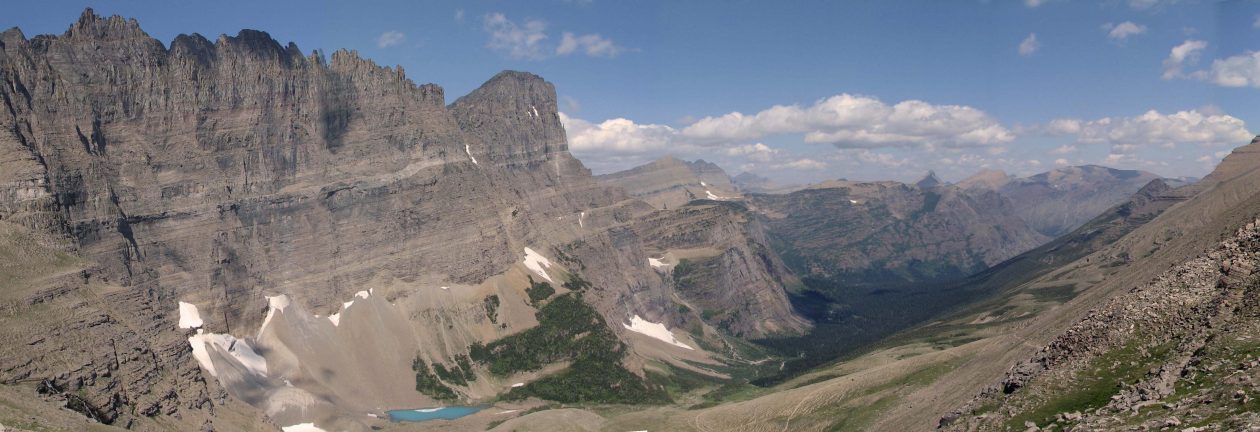Luang Prabang, Laos
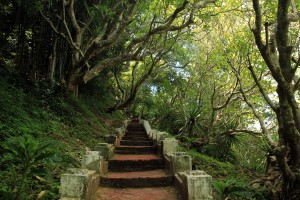
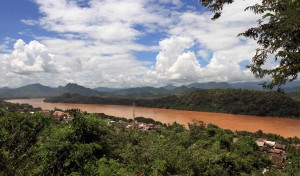
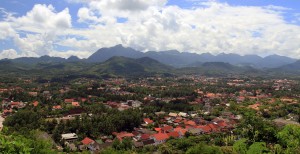
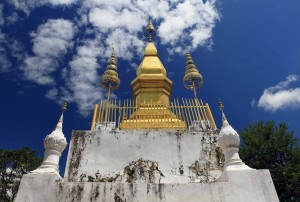
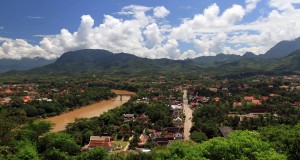
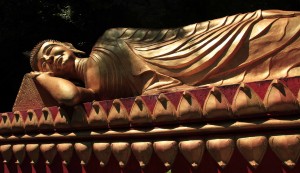
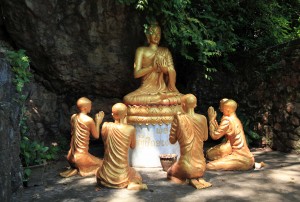
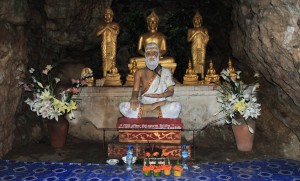
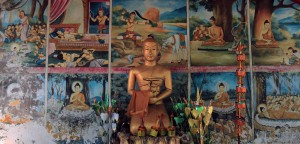
I had set my alarm for 05:20 this morning in order to wake up in time to see the Alms Ceremony at Wat Sensoukharam (scheduled to begin every morning at 06:00 when locals and visitors provide rice, fruits, and other foods for the monks); unfortunately my body protested such an early time to rise and my mind was too weak to resist, so I slept in for almost another four hours. When I finally did wake up, I got ready and walked outside to be greeted by the sun, just as scorching as it was yesterday; I then decided to hide from the sun’s rays in my room for a while longer; when I finally built up the courage to venture outside (after applying much sunscreen – the Laotian sun is no joke) I walked north to Chomsy Hill (also known as Mount Phou Si, which is a hundred meters above ground level), the prominent hill in Luang Prabang. I reached the steps leading up to the top of the hill (across from the former Royal Palace) and began my ascent; it wasn’t too great of a climb and I reached the summit in a short time; at the top of the hill, I was able to see most of the town along with the Mekong River, the Nam Khan River, the airport, and Vipassana temple in Wat Phonh Phao in the distance; perched on top of the hill is Wat Chom Si, which has a Buddhist stupa and temple hall. After exploring the top of the hill, I descended the stairs on the northeast side of the hill; on the way down I passed a number of Buddha statues in the woods (some reclining, seated, and standing in the fearless pose), stupas, and other temple structures collectively belonging to Wat Tham Phou Si; I also entered in to a short cave to visit a shrine inside and another that had a natural formation that looked like Buddha’s footprint; walking around, I also noticed many similarities to the designs found in Cambodia – temple doors here look similar to the false doors found in Angkor temples, Nāga balustrades decorate many temple grounds here (albeit, Nāga’s snake heads are more spread out here in Laos), and the “modern” (built within the last two centuries) temple designs here look similar to the ones I viewed in Cambodia, as well as Thailand for that matter.I then reached the bottom of the hill and walked east to my next stop.
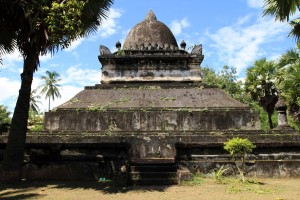
I walked through the old town of Luang Prabang, passing by more European-looking homes and buildings, until I reached Wat Visoun – Luang Prabang’s oldest temple, built in 1513 AD during the reign of King Wisunarat; the temple was originally built from wood, but was burned down in 1887 by Chinese “Black Haw riders” and was rebuilt later; the most prominent feature in the temple compound is a large stone stupa shaped like a lotus flower that was built in 1503. After walking around Wat Visoun’s stupa and checking out the other structures inside the compound (there was a shelter with two long boats that several men were painting, each able to fit twenty rowers), I then continued further east to the next temple on my itinerary.
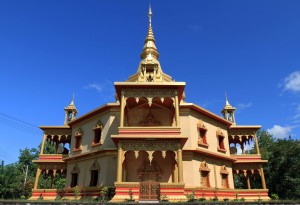
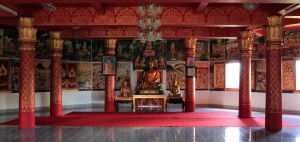

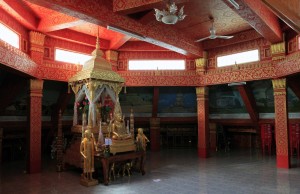
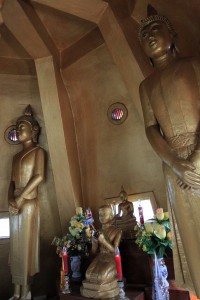
I walked east past the highway I had taken in to town yesterday and after a while of wandering up and down some winding roads, I came to the entrance of Wat Phonh Phao (located next to a rollerskating rink that was blasting the latest pop songs on its speakers); I walked through the lightly forested temple grounds, ascending up the road, to Vipassana temple, a golden temple for Buddhists to practice Vipassana meditation. The structure was deceiving from the outside, where visitors can clearly see two discernible levels and a stupa on top; however, inside, visitors can walk up the stairs, past the first two levels, then onward to a bottom level in the stupa-shaped top, then up to a much smaller room inside the narrower part of the stupa, and finally up to the topmost level, a very small room with not much more than some Buddha statues and a center beam – all together, five levels. The temple also had many murals on its walls depicting the life of Buddha, other temples, and (on the bottom floor) there were many depictions of hell that look like they were directly inspired by the paintings of Hieronymus Bosch (e.g. humans with animal heads being tortured and eaten alive) – these were actually some of the most graphic depictions of hell I had ever seen and was surprised to find them adorning the walls of a Buddhist temple in Laos of all places. After visiting each level of the temple and walking around the outside, I then left Wat Phonh Phao and headed back to the center of town, taking a dirt trail I took yesterday through some of the poorer parts of town.
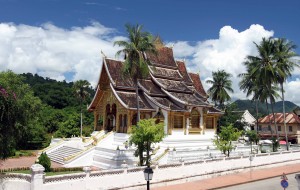
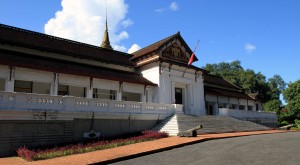
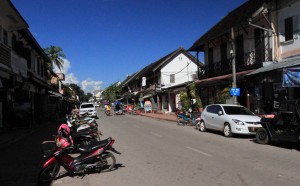
I reached the town center and then walked to Haw Kham, the former Royal Palace and now the National Museum of Luang Prabang; the palace was built in 1904 for King Sisavang Vong and in 1975 the monarchy was overthrown by the communists and all the royals were taken to “re-education” camps (haha ha . . . you have to laugh (or cry) at just how fucked up communism is; of course, like any sensible freedom loving man, I strongly disapprove of monarchies, but communism is clearly no better). I entered inside the palace grounds and walked in to the former palace, which had many rooms with a very beautifully decorated throne room, as well as many regal artifacts (many were gifts from other nations, but my favorite one was found in the dining room – it was a wine bottle holder made from wood and shaped like a cannon carriage, designed especially for champagne bottles to fire their corks like an artillery round). I walked through the inside of the palace and then out to the car park which housed some of the former King’s automobiles. Then I walked to the temple, Haw Pha Bang, located on the palace grounds; the incredibly lazy staff at the museum already began closing doors at 15:30 (the museum doesn’t close until 16:00 – they should change the closing time if they can’t stick to their own schedule), so I had to insist on seeing the inside of the temple and for the staff to do their job; lucky for me, they reopened the doors to the temple so that I could view the inside statues and decorations and – most importantly – get my money’s worth (it is complete bullshit to sell entry tickets up until 15:30 and to also close everything at 15:30; I feel sorry for all the tourists who came later than I did; what a scam). I then walked around the palace grounds some more before exiting at 15:58. Pictures were not allowed in any of the buildings, thus the reason why I have so few of this site to share.
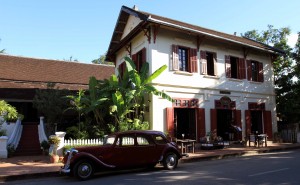
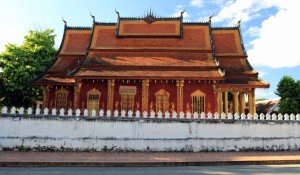
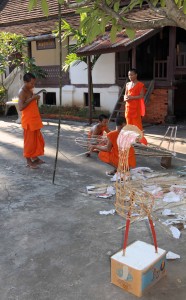
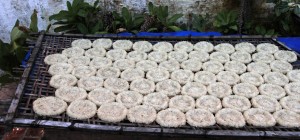
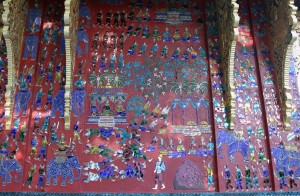
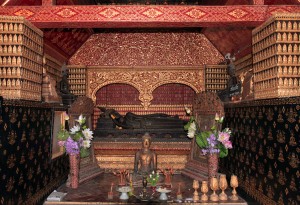
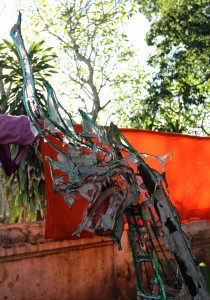
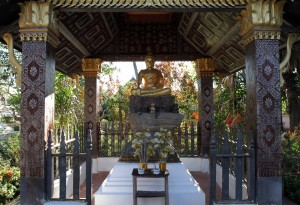
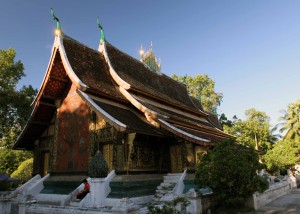
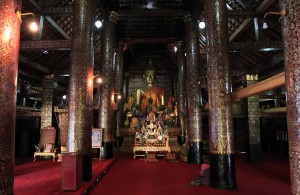
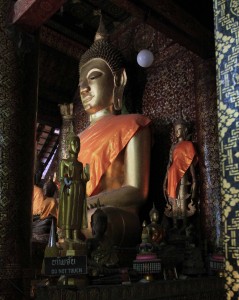
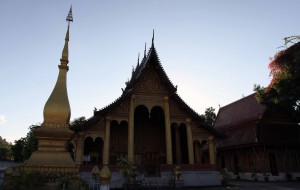
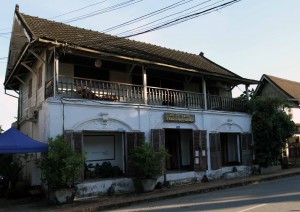
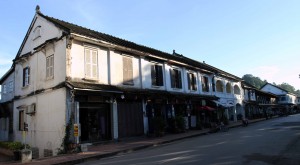
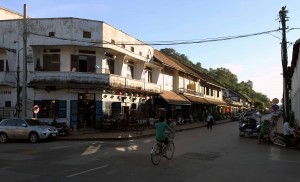
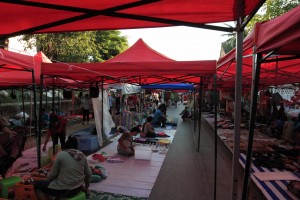
I then walked north past some more European-styled structures, some more temples (Luang Prabang must have more temples than residents), and past some young monks preparing for a Buddhist festival in October by creating different shapes (bird, airplane, heart, etc.) out of strips of bamboo, which would later be covered by paper or cloth. I finally reached my last destination for the day, Wat Xieng Toung; this is the oldest monastery in Luang Prabang, built in 1560 AD by Lao King Setthathirath, and supposedly the most beautiful, but this may have been marred by ongoing renovation while I visited; the monastery did have some nice stupas, shrines, and one very well decorated main hall. I walked around the monastery grounds and inside a shrine and the main temple hall, before exiting and walking north to where the Nam Khan River meets the Mekong River. I then walked back to the guesthouse, through where many of the locals were setting up for their night market, and stopping at two stores along the way (the first for much needed hydrating liquids and the second for even more needed wine).
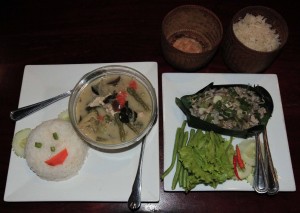
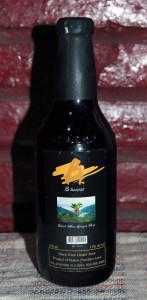
After working on the website back at the guesthouse for some time, I then went out to eat dinner; I walked to a nearby restaurant and had Lao Green Curry (thick coconut milk stew with chicken and fresh vegetables), “Laap” (Laos’ signature dish of minced meat (I ordered pork) with seven different local herbs and spices), sticky rice, steamed rice, and a Lao beer. After dinner, I walked back to the guesthouse to continue working on the website and typing out journal entries; I also had the Chilean bottle of Syrah wine I had bought earlier (very nice with tastes of blackberries, plum, vanilla, and green pepper) and the small bottle of ginger root black wine (it tasted like a rice wine with ginger flavoring) that was produced in Laos. I then eventually went to sleep, hoping that I would wake up early enough to witness the Alms Ceremony tomorrow.
